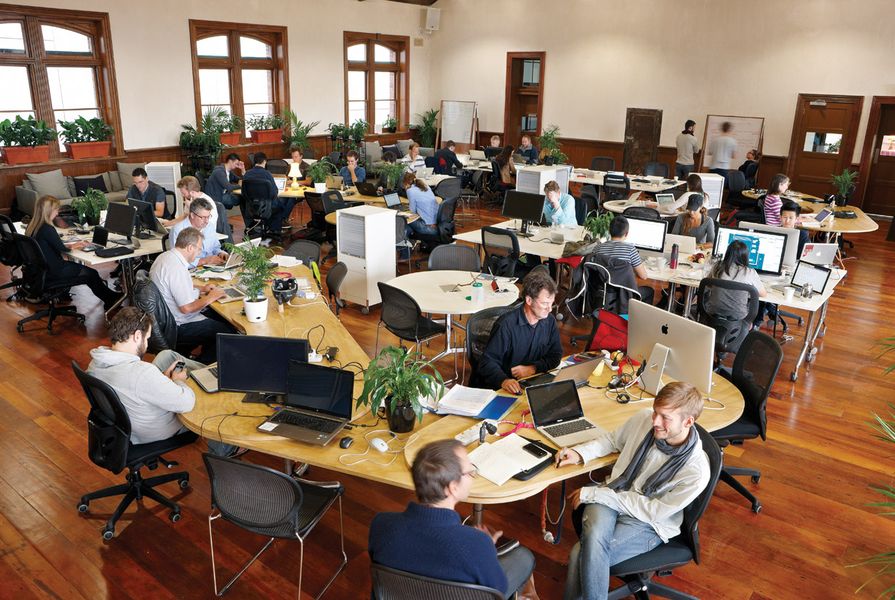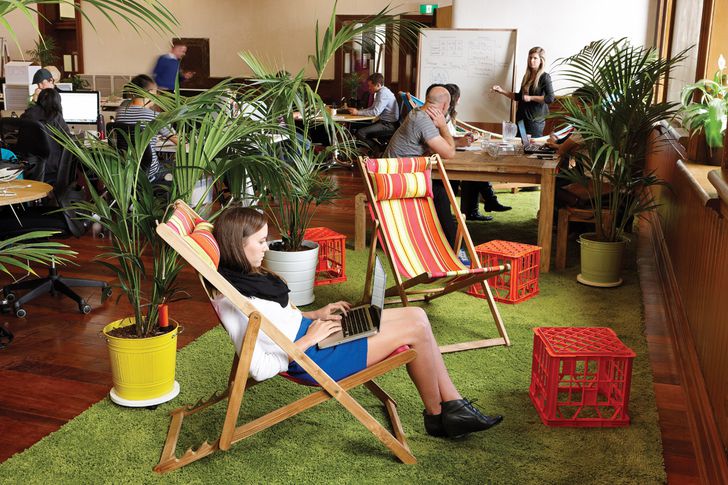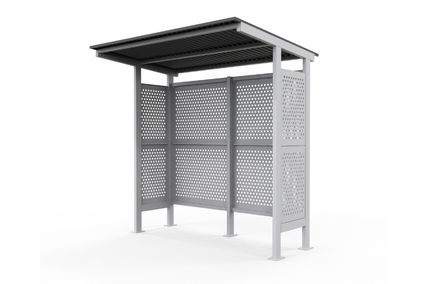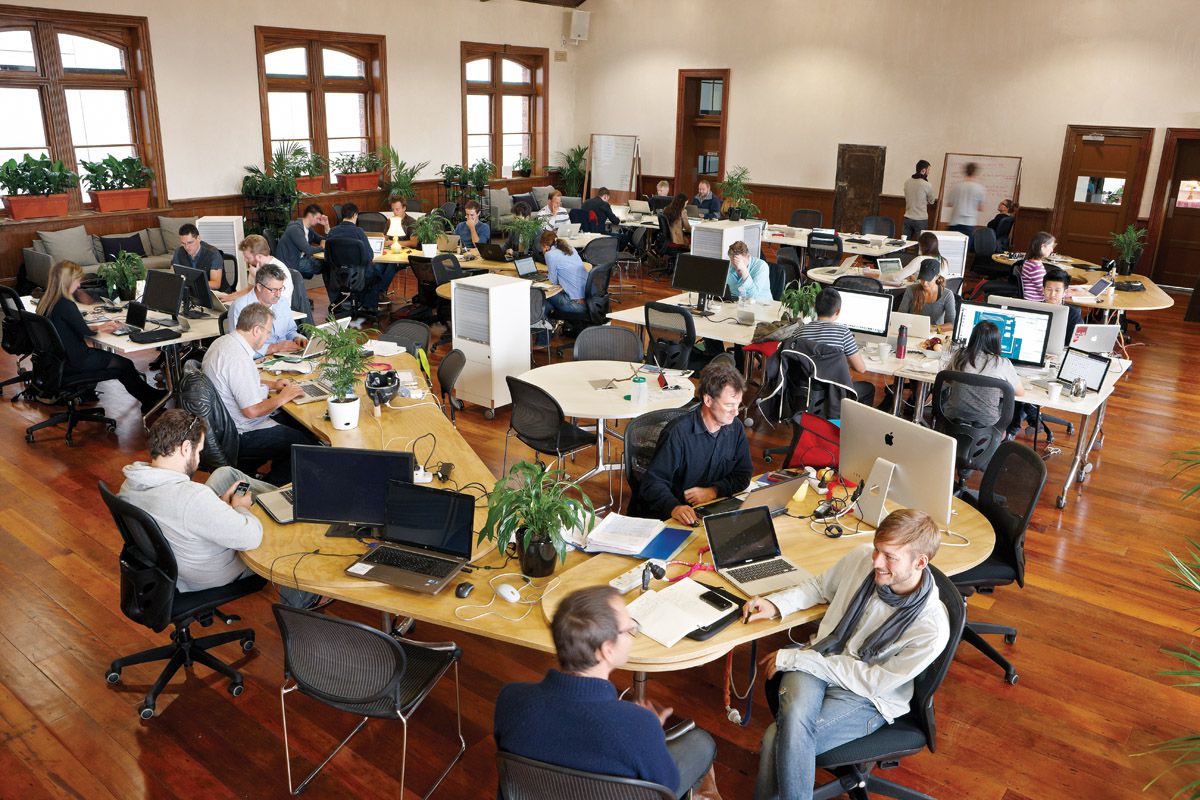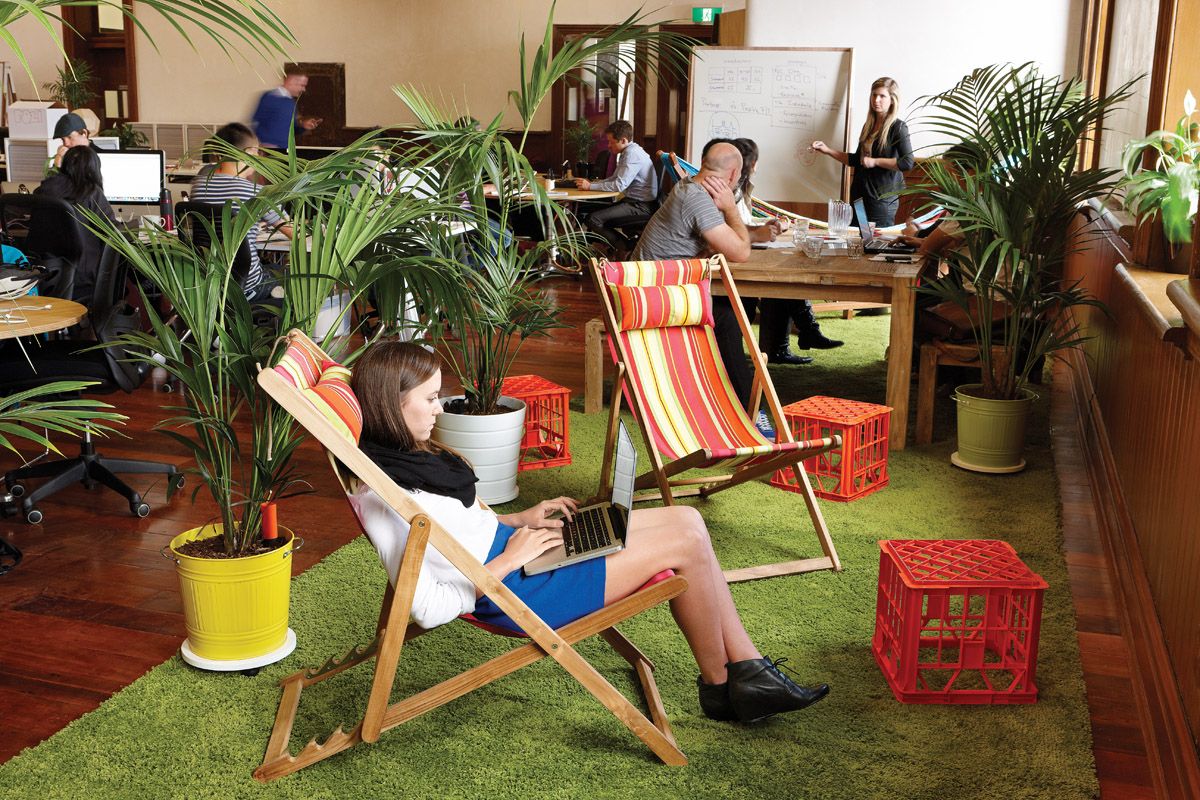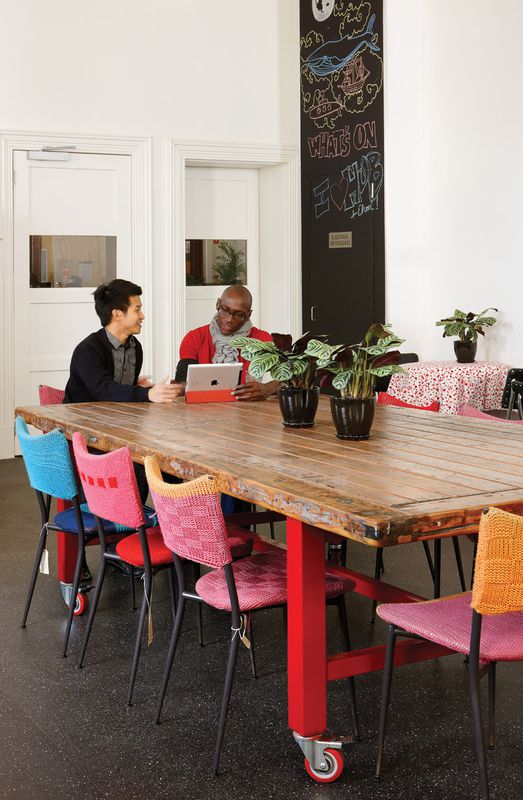“The future of work” is a phrase that has been overused, rarely understood, and even less frequently reflected in workplace design. It had become such a symbol of an unrealized but inevitable workplace future that it had started to drive many of us mad. And now suddenly the future of work is here.
After years of “workplace of the future” presentations, seminars, white papers and research projects, we are now genuinely likely to be working anywhere, any time, and in virtual teams, collaborating widely via virtual social networks. We are merging professional and personal life and working with diverse colleagues just as likely to have opposed the war in Vietnam as to have shared their adolescent years on Facebook.
Across our economy, automation, outsourcing and “offshoring” have continued the shift from process work to knowledge work, accelerating worker autonomy and mobility. Demographic change has put the spotlight on mentoring, multiple career phases, ongoing learning and work-life balance. The war for talent subsided only briefly, but will intensify further as senior ranks retire. And the economic environment (and fundamental assumption of continual growth) has heightened pressure on business performance, in conjunction with pressure for social, ethical and environmental responsibility. All this, and the rapid dominance of mobile technology and ubiquitous networks, has created the “tipping point” with regard to how and where we work.1
In response, the demands businesses make of physical workplaces have also (finally) changed. In the past workplaces may have had multiple consolidated sites, refreshed the look and feel or optimized space efficiency. Today they must also attract and retain talent, support transparency and collaboration, facilitate complex structures and working relationships, and reinforce underlying brand values and culture.
It is into this environment that “the future of work” finally arrived. The last few years have been a period of suddenly shifting paradigms; a breaking through the floodgates after years of building pressure; a last-minute, come-from-behind victory by a promising underdog. A revolution in work!
Manifested most visibly in the sudden sweep to fame of Veldhoen + Company’s Activity Based Work (or flexible working, smart working, free-range working or whichever slogan applies in your case) the relationship between the individual and the allocated workstation seems to have finally budged in the mainstream. Activity-based working is nothing new. Andersen Consulting and others embraced it in the early 1990s, it was the premise for Rosemary Kirkby’s campus MLC project in 1997, ANZ implemented a “non-territorial workplace” pilot project in 2003 and I never had a desk of my own in nearly ten years at DEGW. But now even the Property Council of Australia acknowledges it (and the resultant contraction in demand) as a “trend that’s here to stay.”2
The future of workplace design – Hub Melbourne by Hassell.
Image: Dianna Snape
There are also quieter trends, such as co-working communities and shared workspaces, reflecting less stable employment tenures and organizational boundaries. Capabilities rapidly form and unform for projects, drawing on nimble and independent resources at both the freelancer or social entrepreneur scale (e.g. the Hub network3 including Hub Melbourne) and at the corporate scale (e.g. Google’s new shared campus in London4). Workplaces now take many forms and are nodes in a network of places across the city, not a container or boundary for the organization.
This future, having finally arrived, begs the obvious question: What’s the next future?
As the rate of change increases we are, more than ever, required to design for future generations. Any workplace being designed today is likely to still be in operation in the year 2030.
Many forward-thinking clients are rightly asking, “If we’ve made so much progress in workplace design, why do so many of the workplaces all look the same? Given the technology revolution, shouldn’t they be different from the workplaces we have experienced to date?”
Designers alone cannot be expected to drag clients through the normal constraints to arrive at new and challenging models for the workplace – especially models that increasingly interact with broader aspects of business such as culture, talent, performance and client management.
A new generation of workplace thinking will again be driven by new business challenges (not design). Breakthroughs will rely on the vehemence, tenacity and openness with which clients explore the ways physical places can impact on business. Our role as designers is to support and assist this exploration. In turn it will open new opportunities for design invention.
So what will business want? Organizations that achieved the openness, transparency, flexibility and efficiency we explored in the best workplaces to date have considered the next set of questions. Businesses want increasing levels of speed, agility, energy, creativity, innovation, culture and ultimately a proven impact upon the bottom line. While the benefits of the best workplaces realized during the last decade are now generally acknowledged, they don’t address the next decade’s issues.
To arrive at a different set of workplace answers we need to start exploring a new and more interesting set of questions. The issues affecting business performance have moved on. Next-generation work-places will be driven by a deeper understanding and application of new themes.
What would it mean, for instance, to more deeply understand the role the workplace plays in employee attraction and retention? The workplace is often said to help attract and retain, and anecdotal evidence seems to support this intuition. But deeper research into which aspects of the environment affect which aspects of employee psychology might tell us where to spend our time and effort. Is it the reception floor where one is interviewed that matters to an applicant? The workstation (if there is one)? The view?
Similarly, if product and service innovation and speed to market will drive competitive advantage, should we better understand the critical factors affecting creativity and value creation? If new ideas are the collision of hunches5 then we can focus designs on encouraging this. A role or business in which solitude is important, however, would require a different kind of place.6 Designers don’t generally understand these linkages as well as we should.
Workplaces increasingly accommodate members of virtual and scattered teams. Do we understand how this changes what it means to support effective teamwork, or how this should be reflected in the physical workplace? There must be more to it than video-to-the-desktop and telepresence. What about the psychology of trust, and how places can foster it? And what impacts will constant technological interaction have on human relationships? Will it be comparable to the way in which music software influenced live music?7
Many of the trends imply an increasingly self-organizing workforce. Workplaces are still generally over-managed, attempting to maintain a degree of control over how and where things get done. We need to more deeply understand this shift towards less control in order to design for a new, more fluid system. What enables effective self-organization? Which elements are critical? What are the implications on other aspects of the future?
For example, there seems to be an increasing emphasis on the need for identity, like-minded peers and a meaningful shared purpose in work. Now that we can choose to work in a very independent way, the importance of belonging to something becomes clearer. Physical places can communicate a shared set of underlying values – this is a powerful weapon in maintaining cohesion in a world of decreasing stability. It is also a relatively inexpensive way to create intrinsic motivation and loyalty through a sense of identity;8 to tell people their contribution matters.9
Finally, we should interrogate what we mean by productivity and performance. What type of productivity are we trying to enable through better workplaces? So many discussions revert to measured factors of individual work. But the productivity required to achieve business performance, and to address Australia’s relative productivity underperformance, is a collective pursuit.10 So what is the link between the individual and the collective? Are reductions in individual productivity a worthwhile price to pay for improved collective performance, for example? How are we analysing the elements in order to know we are operating on the right mechanisms?
Exploring these issues will take workplaces somewhere new. The current shift in common practice will open people’s minds to further change, just as those who moved to open plan were then engaged by the idea of informal spaces. No one knows exactly where this will lead, or how quickly.
But it seems clear that workplaces will need to be more meaningful and authentically conformable. They will be increasingly dense and diverse to support choice, interaction and unplanned opportunities. They will be more self-organizing and user-appropriated to allow for the speed and unpredictability of business, and to allow teams to have more emotional ownership over the space they occupy. And they will continue to be technology enabled, but through simple networks to which people will bring their own devices11 and expensive shared resources such as holographic visualization or virtual-reality immersion suites.
Changes to our workplaces will happen in the context of broader changes to our society. The interplay between trends may be the most difficult aspect to anticipate. But it seems that change really is the only constant. Design practice must be fleet of foot if it is to maintain relevance or increase the value of its contribution to business. Stable, managed design processes must be more fluid, flexible, collaborative, cross-disciplinary and explorative – just like the workplaces we seek to create.
Brace yourselves – designing good workplaces is going to get even trickier.
1. Malcolm Gladwell, The Tipping Point – How Little Things Can Make a Big Difference (London: Little, Brown Book Group, 2002).
2. Property Council of Australia, Office Market Statistics, August 2012.
3. Hub Melbourne website, hubmelbourne.com/ (accessed 16 August 2012).
4. Campus London website, campuslondon.com/ (accessed 16 August).
5. Stephen Johnson, Where Good Ideas Come From – The Natural History of Innovation (New York: Riverhead Books, 2010).
6. Joann S. Lublin, “Introverted Execs Find Ways to Shine,” The Wall Street Journal website, 15 April 2011, online.wsj.com/article/SB10001424052748703983104576263053775879800.html (accessed 16 August 2012).
7. Jaron Lanier, You are Not a Gadget: A Manifesto (New York: Knopf, 2011).
8. George A. Akerlof and Rachel E. Kranton, Identity Economics: How Our Identities Shape Our Work, Wages, and Well-Being (Princeton: Princeton University Press, 2010).
9. Hugh Mackay, What Makes Us Tick: The Ten Desires That Drive Us (Sydney: Hachette, 2010).
10. Ewin Hannan and Richard Gluyas, “Productivity gap ‘holding back growth’ as survey ranks Australia second last,” The Australian, 1 August 2012, theaustralian.com.au/national-affairs/treasury/productivity-gap-holding-back-growth-as-survey-ranks-australia-second-last/story-fn59nsif-1226439881599 (accessed 16 August 2012).
11. Beth Stackpole, “BYOD: IT Execs Learn to Let Go of ‘Command and Control’ Mindset,” Computerworld, 6 June 2012, computerworld.com/s/article/9227026/BYOD_IT_execs_learn_to_let_go_of_command_and_control_mindset (accessed 16 August 2012).
Source
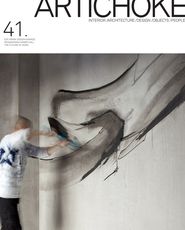
Discussion
Published online: 15 Jul 2013
Words:
Steve Coster
Images:
Dianna Snape
Issue
Artichoke, December 2012

